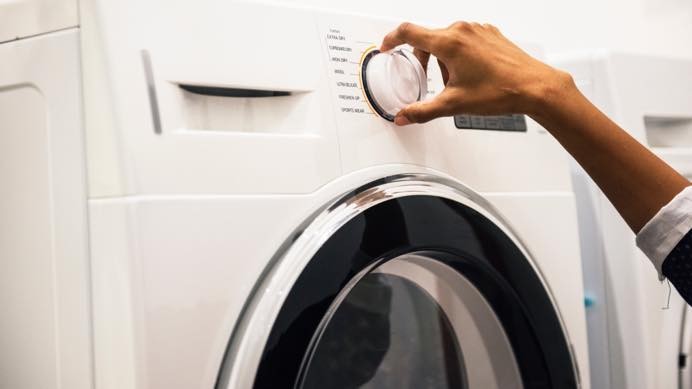Discovering blood stains on your bed sheets can be frustrating, but it doesn’t mean your beloved bedding is ruined. Accidents happen, and knowing how to effectively remove blood stains can save your sheets and your peace of mind. This guide provides you with expert-backed methods to tackle blood stains, ensuring your sheets stay fresh and clean.
Blood stains, while seemingly stubborn, can be lifted using common household items and the right techniques. Let’s explore proven methods to restore your sheets to their pristine condition.
Effective Methods to Remove Blood Stains from Sheets
Here are several effective techniques to remove blood stains from your sheets, using readily available household products.
Hydrogen Peroxide: Your Go-To for Fresh Stains
Hydrogen peroxide is a powerful and readily available solution, especially effective on lighter colored sheets. Its bleaching action helps break down blood stains, but it’s wise to test it on a hidden area first on darker fabrics to ensure no discoloration occurs.
- Act Quickly: The fresher the stain, the easier it is to remove.
- Cold Water Rinse: Immediately rinse the stained area with cold water. This prevents the stain from setting further into the fabric.
- Apply Hydrogen Peroxide: Pour a small amount of 3% hydrogen peroxide directly onto the blood stain.
- Observe Fizzing: Let it fizz and work on the stain for a few minutes. This fizzing action is the hydrogen peroxide breaking down the blood.
- Gentle Rubbing: Gently rub the fabric together to help lift the stain.
- Rinse Again: Rinse the area again with cold water.
- Repeat if Necessary: For stubborn stains, repeat the process.
- Launder as Usual: Wash your sheets as you normally would in cold water after the stain is removed.
Hydrogen peroxide is particularly effective because it acts as a mild bleach and oxidizes the blood stain, breaking it down at a molecular level.
White Vinegar: A Natural Stain Dissolver
White vinegar is a natural and gentle acid that can effectively dissolve blood stains. It’s a great option for those seeking a more natural approach to stain removal.
- Direct Application: Pour white vinegar directly onto the blood stain.
- Soaking Time: Allow the sheet to soak in the vinegar for about 30 minutes. For older, set-in stains, you might need to soak for longer, even up to a few hours.
- Cold Water Rinse: Rinse the stained area thoroughly with cold water.
- Repeat Soaking (If Needed): If the stain persists, repeat the soaking process in fresh vinegar.
- Baking Soda Paste Boost: For tougher stains, create a paste of baking soda and water. Apply this paste to the stain before soaking in vinegar. Baking soda is a mild alkali that can help lift the stain, complementing the vinegar’s action.
- Launder: Wash the sheets in your washing machine with cold water. To eliminate the vinegar smell, you can add a mild detergent and consider an extra rinse cycle. For lingering vinegar scent, rinsing with unflavored vodka can neutralize it.
Enzyme Stain Removers: Targeted Stain Fighting
Enzyme-based stain removers, often marketed for wine or pet stains, are also excellent for blood stains. These products contain enzymes that specifically target and break down organic stains like blood.
- Apply Enzyme Remover: Apply an enzyme-based stain remover directly to the blood stain. Follow the product’s instructions, as application times may vary.
- Wait: Generally, allow the remover to sit on the stain for about 5-15 minutes, allowing the enzymes to work.
- Launder: Wash the sheets as usual in cold water. Check the stain after washing but before drying. If the stain persists, repeat the treatment before drying, as heat from the dryer can set the stain.
Enzyme cleaners are designed to be fabric-safe and are particularly effective at breaking down the proteins in blood, making them a powerful stain removal option.
Baking Soda and Lemon Juice: A Natural Lightening Duo
This combination utilizes the mild bleaching power of lemon juice and the stain-lifting properties of baking soda. It’s a gentler approach, suitable for lighter stains or as a pre-treatment.
- Create a Mixture: Mix two parts lemon juice with one part baking soda to form a paste.
- Apply to Stain: Blot the paste onto the blood stain, ensuring it covers the entire area.
- Wait: Let the mixture sit on the stain for about 30 minutes. The lemon juice acts as a natural bleaching agent, while baking soda helps lift the stain.
- Rinse: Rinse the treated area with cold water.
- Repeat if Needed: Repeat the application if the stain is still visible.
- Wash as Usual: Launder the sheets in cold water.
Coca-Cola: An Unexpected Stain Remover
While unconventional, Coca-Cola can be surprisingly effective on blood stains due to its carbonic and phosphoric acids. This method is best for tougher, set-in stains, especially on darker fabrics where slight discoloration from other methods is a concern.
- Soak in Coca-Cola: Pour Coca-Cola directly onto the blood stain, ensuring the stain is fully saturated.
- Soaking Time: Let the sheet soak in Coca-Cola for at least an hour, or even a couple of hours for set-in stains. The acids in Coke help to break down the blood.
- Check Stain: Monitor the stain to see if it’s lightening.
- Wash Thoroughly: After soaking, wash the sheets thoroughly in your washing machine with detergent to remove the Coke and the dissolved stain. Make sure to use a cold water cycle to prevent setting any residual stain.
Crucial Tip: Always Use Cold Water
Regardless of the method you choose, always use cold water when dealing with blood stains. Hot or warm water will cook the proteins in the blood, causing the stain to set permanently into the fabric fibers, making it much harder, if not impossible, to remove. Cold water helps to lift the blood without setting the stain.
General Tips for Blood Stain Removal Success
- Act Fast: Treat the stain as quickly as possible for the best results. Fresh blood stains are significantly easier to remove than set-in ones.
- Pre-treat: Before washing, always pre-treat the stain using one of the methods described above.
- Test in an Inconspicuous Area: When using hydrogen peroxide or any new stain remover, test it on a hidden part of the sheet first to ensure it doesn’t damage or discolor the fabric.
- Be Patient: Stubborn stains may require multiple treatments. Don’t be discouraged if the stain doesn’t come out immediately. Repeat the process as needed.
- Avoid the Dryer Until Stain is Gone: Do not put the sheets in the dryer until you are certain the stain is completely removed. The heat from the dryer will set any remaining stain, making it permanent. Air dry the sheets after treatment and check for the stain before machine drying.
Prevention is Key
While knowing how to remove blood stains is essential, preventing them in the first place is even better. Consider using mattress protectors and sheet protectors, especially if you are prone to nosebleeds or have injuries that might bleed overnight. Addressing the underlying cause of blood stains, if applicable, can also help prevent future incidents.
Conclusion
Removing blood stains from sheets doesn’t have to be a daunting task. With these proven methods and a little patience, you can effectively remove blood stains and keep your sheets looking fresh and clean. Remember to act quickly, always use cold water, and choose the method that best suits the stain and fabric type. By following these guidelines, you can confidently tackle blood stains and maintain the quality and comfort of your bedding.

